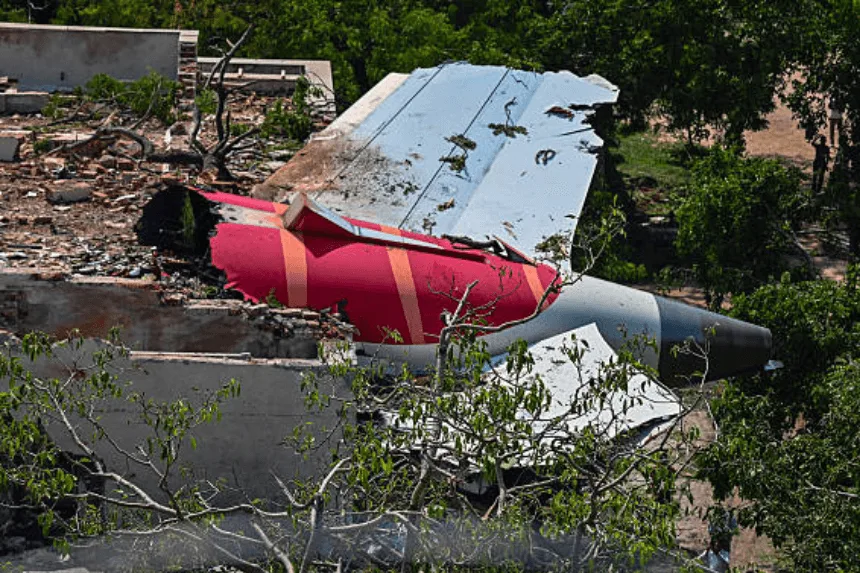The Air India crash engine investigation has become a focal point of global aviation safety efforts. On June 12, Air India flight AI171, a Boeing 787-8 Dreamliner, tragically crashed shortly after takeoff from Ahmedabad airport in western India. The aircraft was headed to London with nearly 300 people on board. Sadly, over 270 people lost their lives in what is now one of India’s deadliest aviation disasters in recent years.
- What Do We Know About the Aircraft’s Engines?
- How Does Engine Age Affect Safety and Performance?
- What Has Air India Done in Response to the Tragedy?
- What Broader Impacts Will This Crash Have on Air India’s Future?
- What Are the Next Steps in the Air India Crash Engine Investigation?
- Conclusion: A Turning Point for Safety in Indian Aviation?
This tragedy has sparked immediate investigations by Indian authorities, global aviation safety bodies, and independent experts. With black boxes recovered and engine records available, officials are determined to uncover the exact cause of the crash. The investigation’s outcome will be critical in improving safety procedures and helping passengers regain confidence in air travel.
What Do We Know About the Aircraft’s Engines?
According to N Chandrasekaran, Chairman of Air India, both engines had no known faults before the flight. “The right engine was a new engine installed in March 2025. The left engine was last serviced in 2023 and was scheduled for its next check in December 2025,” he stated during a televised interview.
He emphasized that both engines had clean service histories and the aircraft had performed reliably in previous flights. These statements aim to clarify that no maintenance delays or known technical issues directly contributed to the crash. Still, the Air India crash engine investigation is looking at all possibilities.
Both engines belonged to the Genx-1B family, built by GE Aerospace. These engines are widely used in modern Boeing 787 aircraft. They are known for high performance, advanced monitoring, and fuel efficiency. However, even highly reliable engines are subject to continuous assessment, especially after a catastrophic failure.
How Does Engine Age Affect Safety and Performance?
One major misconception the investigation is helping to dispel is the belief that newer engines are always safer. Aviation experts point out that in modern aircraft, engine age is not the sole determinant of engine health. Instead, real-time data and performance metrics offer a more accurate view of engine condition.
The Genx-1B engines used on the ill-fated aircraft are equipped with Full Authority Digital Engine Control (FADEC). This system constantly monitors engine behavior and provides automated alerts if abnormalities are detected. Maintenance teams use this data, along with physical inspections, to determine when service is required.
Even with digital monitoring, there are still components inside the engine, known as Life Limited Parts (LLPs), that require replacement after a fixed number of cycles. A cycle is completed every time the engine is started and shut down. Typically, LLPs are rated for 15,000 to 20,000 cycles. These hard limits exist to prevent part fatigue, which can lead to failure.
The Air India crash engine investigation is expected to analyze data from FADEC systems, maintenance records, and flight logs to understand whether any of these components played a role. Read another article on Jeju Air Crash Probe Black Box Insights
What Has Air India Done in Response to the Tragedy?
In the wake of the crash, Air India has taken a proactive stance. The airline announced a 15% reduction in international wide-body operations until mid-July. This move allows the airline to prioritize thorough safety checks and ensure that crews and technical staff operate under optimal conditions.
A company statement described the decision as difficult but necessary. “The curtailments are a painful measure to take, but are necessary following a devastating event which we are still working through and an unusual combination of external events,” the airline said.
So far, 26 of the airline’s 33 Boeing 787 aircraft have undergone full safety inspections and have been cleared for service. The remaining aircraft, as well as the Boeing 777 fleet, are undergoing additional checks. This is part of a larger safety campaign mandated by India’s aviation regulator, which issued preventive inspection orders across the 787 fleet nationwide.
These enhanced checks underline how seriously the Air India crash engine investigation is being treated, not just by Air India but also by regulatory authorities and the aviation industry at large.
What Broader Impacts Will This Crash Have on Air India’s Future?
The timing of the crash has added complexity to Air India’s ongoing transformation. Tata Sons, one of India’s largest business conglomerates, took over Air India in 2022 with the vision of turning it into a world-class airline. Since then, the airline has rebranded, improved its services, and expanded its international routes.
However, this tragic event has placed the airline’s operations under global scrutiny. Beyond addressing the current investigation, Air India now faces the challenge of rebuilding trust and demonstrating its ability to maintain the highest safety standards.
Still, the response so far has shown strong leadership. By immediately grounding aircraft, launching internal reviews, and cooperating fully with authorities, Air India is working to protect its long-term reputation.
While no amount of action can undo the loss of life, the airline’s handling of the situation will likely influence public perception going forward.
What Are the Next Steps in the Air India Crash Engine Investigation?
The focus of the Air India crash engine investigation now rests on the black boxes—devices that record cockpit audio and flight data. These tools are essential for reconstructing the final moments of the flight.
Experts are analyzing communications between the flight crew and air traffic control, as well as real-time data on altitude, speed, engine pressure, and system behavior. Investigators are also looking into crew training records, pre-flight safety checks, and possible external factors such as bird strikes or runway hazards.
It’s important to note that such investigations take time. Aviation experts have urged the public and media to avoid speculation until all facts are verified. When completed, the findings will likely lead to policy changes, updated procedures, or even technical redesigns—depending on what is revealed.
Conclusion: A Turning Point for Safety in Indian Aviation?
The Air India crash engine investigation is more than just an inquiry into one tragic event. It is a comprehensive review of engine performance, airline procedures, maintenance practices, and aviation safety standards.
As investigators dig deeper, the world is watching. This case could become a benchmark for how modern airlines respond to disaster, with speed, transparency, and accountability.
The hope is that through this process, valuable lessons will emerge—lessons that could help prevent future tragedies and make flying safer for everyone.








